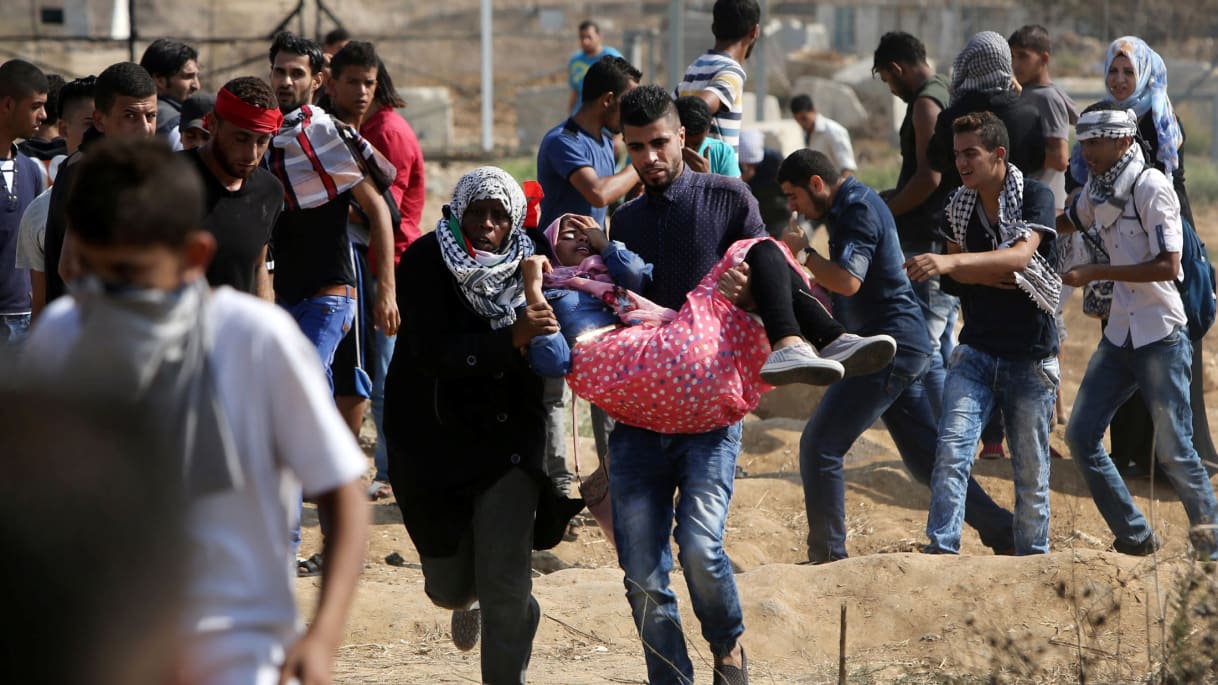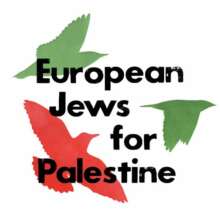By Amira Hass. Published in Haaretz on Aug 13, 2018.
How many of the young people protesting at the Gaza border fence hoped the soldiers facing them would pull the trigger and end their lives? Unfortunately, many

“A person who was shot in the leg and had his leg amputated weeps. Not because his leg is gone, but because the soldier didn’t kill him.”
How many of the young people protesting Friday at the Gaza border fence hoped the soldiers facing them would pull the trigger and end their lives?
Many. Many more than is reported or than the Palestinians are prepared to or can admit publicly.
“A person who was shot in the leg and had his leg amputated weeps. Not because his leg is gone, but because the soldier didn’t kill him,” said someone who came out of the Gaza Strip for a few days. He told of a 30-year-old man who went up to the fence a few times, was wounded a few times, until he got lucky and the soldier on the other side finally killed him. We’ll get to the women too, soon enough, but we’re treading carefully.
What is the ratio between the number of those seeking to continue protecting the principles of the Palestinian struggle – by protesting at the border fence – and the number of those using the patriotic-nationalistic mantle to commit suicide, knowing that Islam prohibits “ordinary” suicide?
We don’t know. Israel doesn’t allow us to enter the Gaza Strip to ask these questions and seek answers. Phone calls are not enough, and so we depend on reports from people coming out – Palestinians and foreign journalists.
Perhaps the protesters are motivated simultaneously by the two goals, and their distance from the fence shows the ratio between their desire to die and their fight for freedom? But many people who are very far from the fence come to see what’s going on, one foreign reporter said. That’s not a struggle, it’s a kind of pastime, because there’s nothing else to do and the sea is full of floating excrement. This journalist, who has known the Gaza Strip for more than 20 years, concludes: When everyone has to find ways to survive, there’s no room for thinking about the national struggle.
Many of them are young people who go to the fence to be wounded, thinking that Hamas will pay them, and then they can pay their debts at the grocery store or pay their rent for two months. It’s true: Hamas pays the injured a one-time payment of $200, I’m told. But only if the injury was serious.
Someone who was slightly injured and went to a Hamas office to ask for money was turned away. Someone else was fortunate – his injury was worth compensation, then he went to the fence to be wounded again, and received compensation again.
But the wounded quickly discover what they did not take into consideration at first: Injuries have their own costs (beyond pain and disability). Surgery is covered. But medications are lacking, so their family goes deeper into debt to pay for them, or not. And then the flesh is infested with worms and it rots. And that’s not a metaphor.
Some people deluded themselves that their family would receive large compensation if they were killed, or that payment for injury would come on a monthly basis. They still think it’s like the second intifada, when Saddam Hussein and Iran sent money for these purposes and the Palestinian Authority bore the burden. Those days are gone forever.
On Ramadan the young people went on the marches because a nourishing meal to break the fast was waiting for them, provided by Hamas. On other days they would receive a sandwich and a drink at the protest tents. Yet they are at risk even if they are not standing next to the fence, but rather are some distance away, near the tents, as attested to by a journalist who was standing near the tents last week when a bullet fired by one of our heroic soldiers flew right past his ear.
Over the weekend, written proof emerged of the mixture of a death wish and commitment to the struggle. Abdallah al-Qatati, 20, was a volunteer paramedic who went every Friday to rescue unarmed people wounded by the strongest army in the region. Ten days ago he wrote a Facebook post, and people who shared it said it was his last: “As on every Friday, I go to the border, but this Friday is different. I’m going like any young revolutionary protecting his homeland and his land. We don’t care about the goals of the march or the goals of any organization in this march. What is important to us is our land and our dignity. And in short, we are fleeing unto death. In the hope that the second death will be more merciful than the first. And that’s the end of the story.”
In other words, life in Gaza is also death, of a different kind. On Friday, an Israeli soldier shot the medic al-Qatati and killed him.
And now to the women protesters: Since they are few, this could seem like an accusation, or scorn, which will draw protests. But a Palestinian woman who spoke with women who go to the fence says she believes that few of them do it for national reasons, or that gradually the national reasons gave way to personal-economic reasons. Some of them went to be wounded and receive compensation. One went to be close to her son who was protesting. And many went to die – one whose husband refused to give her a divorce, another who was unmarried and felt that society considered her damaged goods, a third who was a victim of family violence and a fourth who couldn’t stand the poverty, the constant chasing after a shekel for milk and drops of water from the faucet. We are familiar with the phenomenon of women in the West Bank who committed suicide-by-soldier.
Poverty in Gaza has reached unimaginable, indescribable levels, even for people who are allowed to go in and see it. The despair growing there behind the iron wall that Israel has built is still seeking the lexicon with which it can be depicted.
Amira Hass







